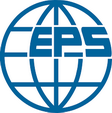Structural Evolution of Porous Carbon Materials Derived from Hemp Fibers: Raman Spectroscopy Studies
DOI:
https://doi.org/10.15330/pcss.26.1.132-139Keywords:
porous carbon material, carbonization, activation, Raman spectroscopy, secondary raw materialsAbstract
Raman spectroscopy was employed to investigate the structural evolution of porous carbon materials derived from hemp fibers through steam-assisted carbonization at temperatures of 400, 500, 600, 700, 800, and 900°C (K series), followed by nitric acid activation (KN series) and additional annealing in air (KNO series). The study is based on a comparison of the efficiency of two-component and five-component approximations for analyzing the 800-2000 cm⁻¹ spectral range in the Raman spectra of porous carbon. The two-component model, which describes only the D and G bands, provides a simplified assessment of graphitization and defect concentration, allowing for a quick evaluation of structural disorder by analyzing the ratio of the integrated intensities of the ID and IG spectral bands. The five-component approximation, incorporating the D₁, D₂, D₃, D₄, and G bands, offers a more detailed analysis of structural defects, significantly improving spectral fitting consistency (R² = 0.95-0.99) compared to the two-band model (R² = 0.80-0.88). A comparison of lateral crystallite size estimations using both approaches revealed a strong correlation between the obtained data (Pearson’s r = 0.83-0.87) across all material series, confirming the reliability of the applied analytical methods. Additionally, the five-component model identified a correlation between the D₃ band position and crystallite size, a relationship that was not evident in the two-component approximation. These findings emphasize the effectiveness of the five-component deconvolution of Raman spectra for tracking structural transformations in carbon materials, providing additional insights crucial for material selection in energy storage, catalysis, and sorption applications.
References
M. Ni, L. Zhou, Y. Liu, R. Ni Advances in the synthesis and applications of porous carbon materials, Frontiers in Chemistry, 11, 1205280 (2023); https://doi.org/10.3389/fchem.2023.1205280.
Z. Pan, S. Yu, L. Wang, C. Li, F. Meng, N. Wang, Y. Zhang. Recent advances in porous carbon materials as electrodes for supercapacitors, Nanomaterials, 13(11), 1744 (2023); https://doi.org/10.3390/nano13111744.
V. Boychuk, V. Kotsyubynsky, A. Kachmar, S. Budzulyak, I. Budzulyak, B. Rachiy, L. Yablon, Effect of Synthesis Conditions on Pseudocapacitance Properties of Nitrogen-Doped Porous Carbon Materials, Journal of Nano Research, 59, 112(2019); https://doi.org/10.4028/www.scientific.net/JNanoR.59.112.
L. Sun, Y. Gong, D. Li, C. Pan, Biomass-derived porous carbon materials: synthesis, designing, and applications for supercapacitors, Green Chemistry, 24(10), 3864 (2022); https://doi.org/10.1039/D2GC00099G.
B.K. Ostafiychuk, R.P. Lisovskiy, A.H.Z. Al-Saedi, B.I. Rachiy, V.O. Kotsyubynsky, P.I. Kolkovsky, A.B. Hrubiak Effect of orthophosphoric acid on morphology of nanoporous carbon materials, Journal of Nano-and Electronic Physics, 11(3), 03036-1 (2019); https://doi.org/10.21272/jnep.11(3).03036.
H.M. Heise, R. Kuckuk, A.K. Ojha, A. Srivastava, V. Srivastava, B.P. Asthana Characterisation of carbonaceous materials using Raman spectroscopy: a comparison of carbon nanotube filters, single‐and multi‐walled nanotubes, graphitised porous carbon and graphite, Journal of Raman Spectroscopy: An International Journal for Original Work in all Aspects of Raman Spectroscopy, Including Higher Order Processes, and also Brillouin and Rayleigh Scattering, 40(3), 344 (2009); https://doi.org/10.1002/jrs.2120.
G. Lipinski, K. Jeong, K. Moritz, M. Petermann, E. F. May, P. L. Stanwix, M. Richter Application of Raman Spect¬ros¬copy for Sorption Analysis of Functionalized Porous Materials, Advanced Science, 9(9), 2105477 (2022); https://doi.org/10.1002/advs.202105477.
V. Kotsyubynsky, B. Rachiy, V. Boychuk, I. Budzulyak, L. Turovska, M. Hodlevska Correlation between structural properties and electrical conductivity of porous carbon derived from hemp bast fiber, Fullerenes, Nanotubes and Carbon Nanostructures, 30(8), 873 (2022); https://doi.org/10.1080/1536383X.2022.2033729.
L.G. Cancado, M.A. Pimenta, B.R. A. Neves, M.S. S. Dantas, A. Jorio Influence of the atomic structure on the Raman spectra of graphite edges, Physical review letters, 93(24), 247401 (2004); https://doi.org/10.1103/PhysRevLett.93.247401.
M.A. Pimenta, G. Dresselhaus, M. S. Dresselhaus, L. G. Cancado Studying disorder in graphite-based systems by Raman spectroscopy, Phys.Chem.Chem.Phys.. 9(11), 1276 (2007); https://doi.org/10.1039/B613962K.
X. Zeng, S. Yu, L. Ye, M. Li, Z. Pan, R. Sun, J. Xu Encapsulating carbon nanotubes with SiO2: a strategy for applying them in polymer nanocomposites with high mechanical strength and electrical insulation, Journal of Materials Chemistry C, 3(1), 187 (2015); https://doi.org/10.1039/C4TC01051E.
V. Eswaraiah, V. Sankaranarayanan, S. Ramaprabhu Inorganic nanotubes reinforced polyvinylidene fluoride composites as low-cost electromagnetic interference shielding materials. Nanoscale research letters, 6, 1 (2011); https://doi.org/10.1186/1556-276X-6-137.
V. Duc Chinh, G. Speranza, C. Migliaresi, N. Van Chuc, V. Minh Tan, N.T. Phuong Synthesis of gold nanoparticles decorated with multiwalled carbon nanotubes (Au-MWCNTs) via cysteaminium chloride functionalization, Scientific reports, 9(1), 5667 (2019); https://doi.org/10.1038/s41598-019-42055-7.
S. Breitenbach, C. Unterweger, A. Lumetzberger, J. Duchoslav, D. Stifter, A. W. Hassel, C. Fürst Viscose‐based porous carbon fibers: improving yield and porosity through optimization of the carbonization process by design of experiment, Journal of Porous Materials, 28, 727 (2021); https://doi.org/10.1007/s10934-020-01026-4.
A. Y. Lee, K. Yang, N. D. Anh, C. Park, S. M. Lee, T.G. Lee, M. S. Jeong Raman study of D* band in graphene oxide and its correlation with reduction, Applied surface science, 536, 147990 (2021); https://doi.org/10.1016/j.apsusc.2020.147990.
Z. Liu, D. Cao, G. Chen, Z. Bi, Q. Chen Experimental Verification for the Graphitization of Inertinite, Minerals, 13(7), 888 (2023); https://doi.org/10.3390/min13070888.
Downloads
Published
How to Cite
Issue
Section
License
Copyright (c) 2025 R.I. Zapukhlyak, V.O. Kotsyubynsky, V.M. Boychuk, B.I. Rachiy, R.G. Abaszade, V.T. Hoi, M.M. Klymyuk

This work is licensed under a Creative Commons Attribution 3.0 Unported License.










